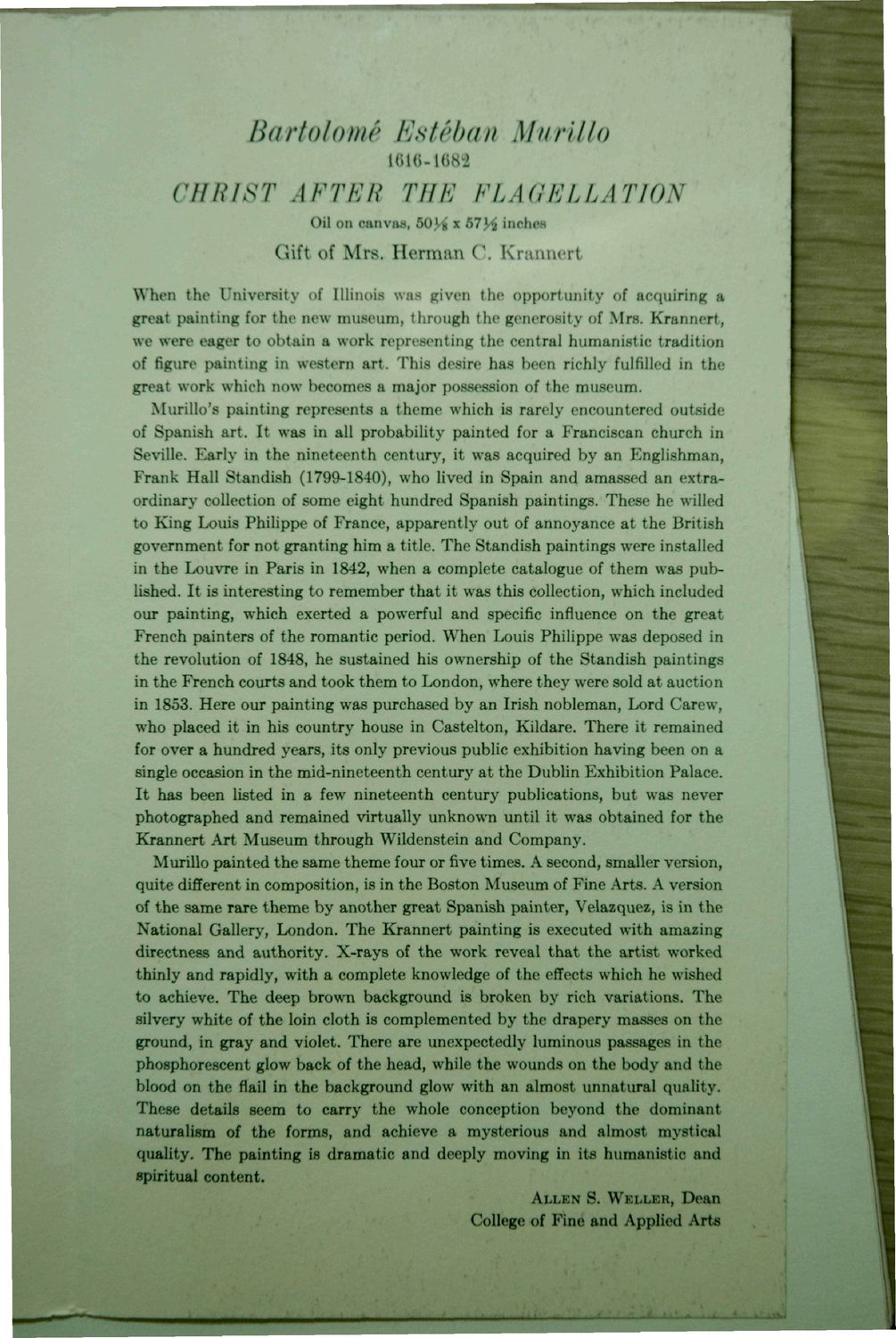| |
| |
Caption: Dedication - Krannert Art Museum
This is a reduced-resolution page image for fast online browsing.

EXTRACTED TEXT FROM PAGE:
Bartolome Esteban Murillo 1616-1682 CHRIST AFTER THE FLAGELLATION™, Oil on canvas, 50J^ x 57}^ inches Gift of Mrs. Herman C. Krannert When the University of Illinois was given the opportunity of acquiring a great painting for the new museum, through the generosity of Mrs. Krannert, we were eager to obtain a work representing the central humanistic tradition of figure painting in western art. This desire has been richly fulfilled in the great work which now becomes a major possession of the museum. Murillo's painting represents a theme which is rarely encountered outside of Spanish art. It was in all probability painted for a Franciscan church in Seville. Early in the nineteenth century, it was acquired by an Englishman, Frank Hall Standish (1799-1840), who lived in Spain and amassed an extraordinary collection of some eight hundred Spanish paintings. These he willed to King Louis Philippe of France, apparently out of annoyance at the British government for not granting him a title. The Standish paintings were installed in the Louvre in Paris in 1842, when a complete catalogue of them was published. It is interesting to remember that it was this collection, which included our painting, which exerted a powerful and specific influence on the great French painters of the romantic period. When Louis Philippe was deposed in the revolution of 1848, he sustained his ownership of the Standish paintings in the French courts and took them to London, where they were sold at auction in 1853. Here our painting was purchased by an Irish nobleman, Lord Carew, who placed it in his country house in Castelton, Kildare. There it remained for over a hundred years, its only previous public exhibition having been on a single occasion in the mid-nineteenth century at the Dublin Exhibition Palace. It has been listed in a few nineteenth century publications, but was never photographed and remained virtually unknown until it was obtained for the Krannert Art Museum through Wildenstein and Company. Murillo painted the same theme four or five times. A second, smaller version, quite different in composition, is in the Boston Museum of Fine Arts. A version of the same rare theme by another great Spanish painter, Velazquez, is in the National Gallery, London. The Krannert painting is executed with amazing directness and authority. X-rays of the work reveal that the artist worked thinly and rapidly, with a complete knowledge of the effects which he wished to achieve. The deep brown background is broken by rich variations. The silvery white of the loin cloth is complemented by the drapery masses on the ground, in gray and violet. There are unexpectedly luminous passages in the phosphorescent glow back of the head, while the wounds on the body and the blood on the flail in the background glow with an almost unnatural quality. These details seem to carry the whole conception beyond the dominant naturalism of the forms, and achieve a mysterious and almost mystical quality. The painting is dramatic and deeply moving in its humanistic and spiritual content. ALLEN S. WELLER, Dean College of Fine and Applied Arts
| |